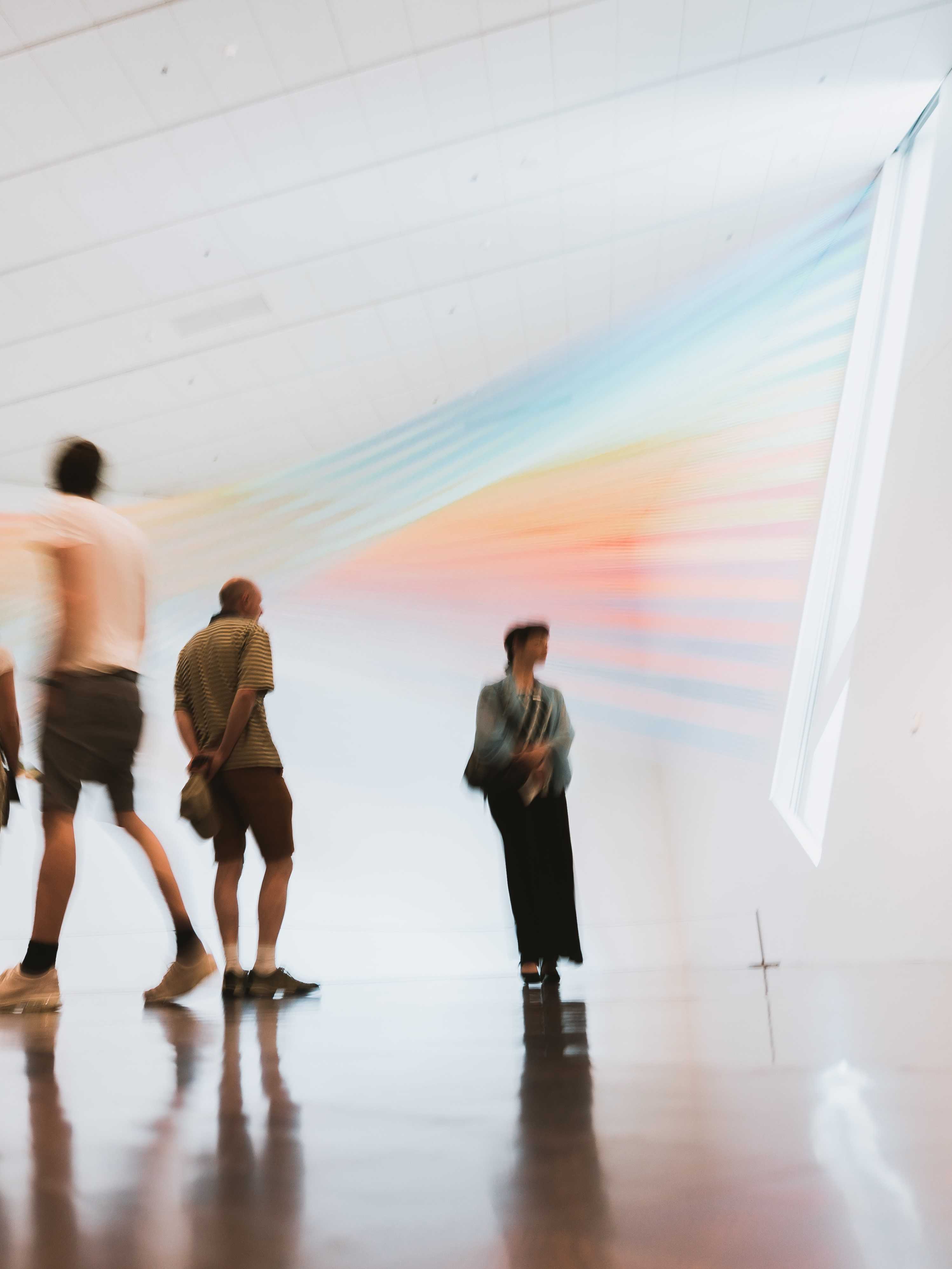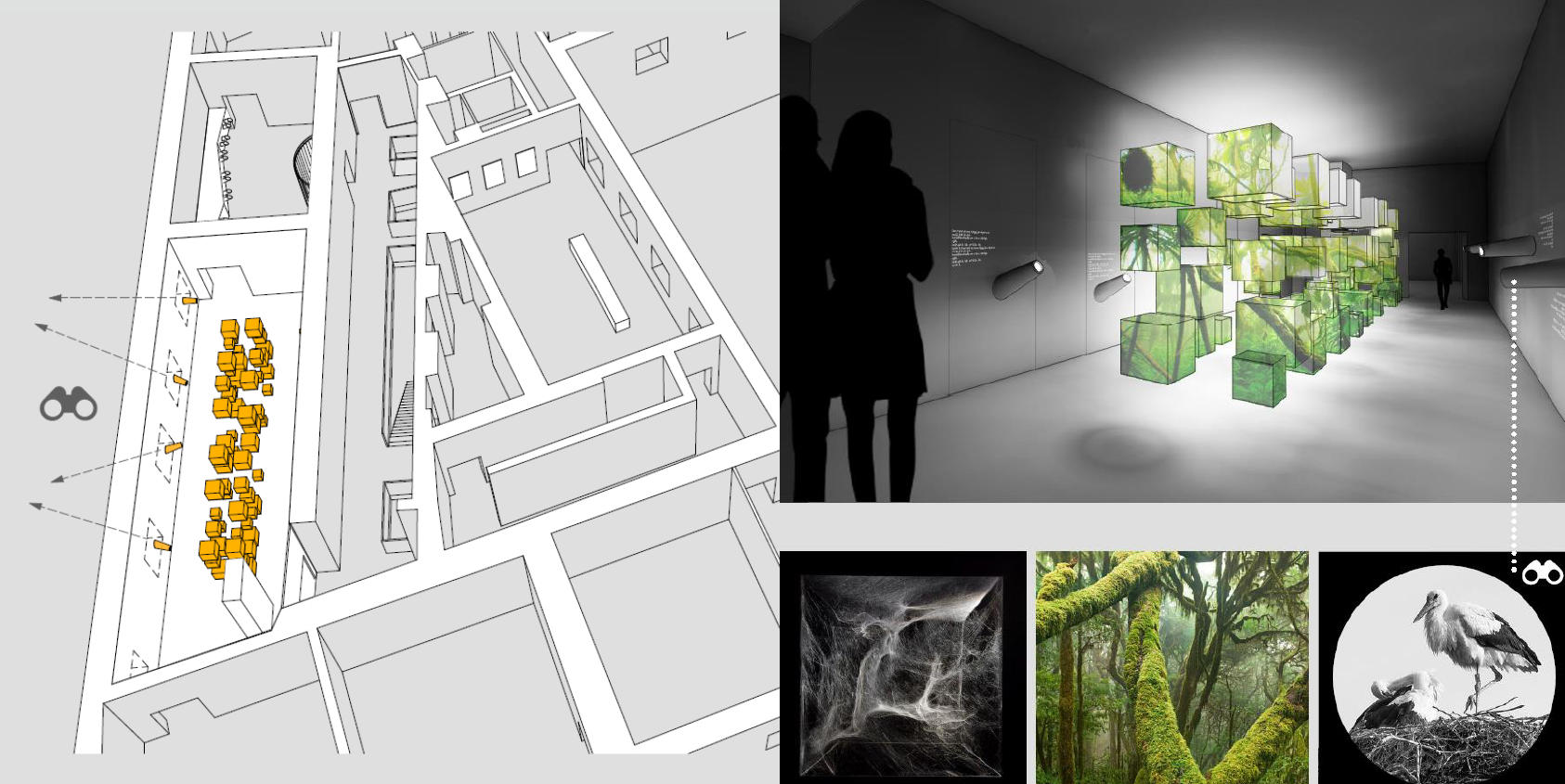June 2021
Text: Benjamin Berggold; Fotos: querkraft

Scenography means visualising and translating stories into a three-dimensional image. It’s about the interplay of space, materials, setup and visual media. Turning messages into experiences and creating lasting memories is key—scenography allows us to communicate complex content.
Scenography is a transfer service that is based on high-level creative skills and thus the ability to rethink and think ahead. It is understood as three-dimensional poetry and recognises the space as a stage. Leveraging the right balance between participation, interaction and inclusion, content is staged in an interdisciplinary way.
When we think of scenography, we think of experiential spaces, temporary and permanent exhibitions in the realms of art and culture, we think of visitors‘ centres, product presentations and brand identities—we think of places that build up excitement. We assist our clients from the initial idea all the way through the implementation, in editing texts and content, creating customized graphics and user interface designs for digital media all the way to overseeing the set-up on site. In a constant dialogue with our clients, we develop spatial and architectural narratives that translate content and messages into experiences.
Scenography is three-dimensional poetry.
2022 Lower Austrian State Exhibition Marchegg
Together with querkraft Architekten we developed a concept for the call for bids for the 2022 Lower Austrian State Exhibition Marchegg, where we came in second place.
The exhibition is aimed at anchoring the Marchfeld in the minds of the visitors and above all of its residents as a historic cultural landscape and significant habitat of a vast diversity of plants and animals located in the centre of Europe. Visitors are invited to take a second glance at the Marchfeld landscape and to explore it from a different perspective throughout an expedition across the region. This journey is designed to raise awareness for the necessity of conserving these ecologically significant natural lands and the regional biodiversity.
We curated and developed a scenographic concept for three of the eight rooms, based on the respective themes. In the first room, we explored the subject of “pristine nature“, which we deliberately staged in an abstract way. The installation explains the diversity and interdependence of the March meadows by highlighting thematic areas individually. Each of these areas is displayed and explained in glass cubes. The arrangement enables close inspection, but also creates a fascinating overall impression. A simple logic dominates the room: The layers of the soil are located in the lower areas, while the tree tops tower above the heads of the visitors. Periscopes, as an additional feature, allow visitors to look outside into the surrounding—real—nature.

Stephanie Gindlstrasser, who was deeply involved in creating the concept, gives us some insight into our workflow that led us to our final concept:
At the beginning it is important to visualise an overall picture. First, we did extensive research on the subject matter, the surroundings, the location and its special features. We also spent much time defining the target audience. This gave rise to rough ideas and approaches that we visualised with mood boards and that we firmed up and thought through as a team.
The concept for the 2022 Lower Austrian State Exhibition Marchegg addresses indoor nature, while nature takes place “for real” outside. We were keen to avoid replications of any kind and chose the path of abstraction and singularisation to facilitate an entirely new view of the “world of wonder nature” and to put it into a different context.
We aimed at engaging visitors with different perspectives from a nature, humans and landscape point of view. An educational approach and innovative communication tools allow us to create an exciting sequence of rooms that feature different moods and atmospheres and alternating possibilities for interaction.


